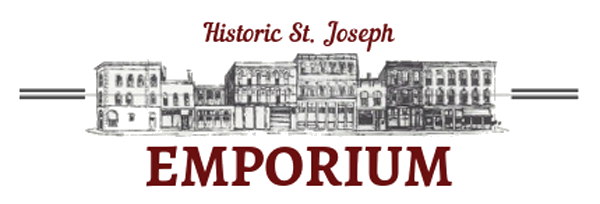Purchase Price $45,900
Each unit has 2bds · 1 bth · 3,700 sqft (total)
One property with three units for great income potential. Property could use some updating, but great potential for really nice units with a good income. Units previously rented for $500 to $675. Lower level currently has tenant, providing income opportunity.
Contact: Evans Realty Team at Keller Williams
Call: (816) 233-1119
House History & Gallery
Built at the turn of the century, this multi-family home in the neighborhood of the charming Hyde Park has always provided a home for the hardworking folk of the Southside of St. Joseph. It’s location, then and now, was close to all that you need – including the iconic Betty’s Café!
This property was built as an income-producing structure, and like all rentals it has had an interesting variety of folk come through its doors. Not surprisingly, many of the people who lived here had connections with the livestock and meat packing industries that were so important to the area. One of the earliest families to live in the duplex (around 1907) was Joseph and Lula LeRoy. Joseph supported his wife and five children as a steamfitter for Swift & Co. Charles Hodey, who lived here in 1913, was a butcher.
Others occupants were paper-hangers, carpenters, and hucksters.
Perhaps the most common job description one finds in the City Directories for the residents of 217/219 W. Hyde Park Avenue is laborer. Sometimes you get a bit more information – William T. Tierney who lived here in about 1912 was a laborer for the St. Joseph Gas Company. Other times, it just says laborer, a description that underscores the hard-working nature of these folks.
The best known early residents of the duplex were George Ira Hobbs and his wife Mary who lived here in 1917. Ira (he seems to have preferred to be known by his middle name) was a wool grader for Swift & Co, but he and Mary seem to have been well-loved by their neighbors. In April 1921, Ira was unable to work due to a protracted illness and his friends gave a party to raise funds to help the family over the rough patch. In 1932, a desperate woman came to their house with her starving infant. Mary Hobbs took in the child and investigate the condition of the family. It turned out that the woman had four other children under the age of six and that they had been dependant on free food from a local church. When that church cut off the aid, the family was unable to feed their children. Mary and Ira coordinated aid for the family and medical attention for the starving infant.
More recently, the duplex was home to Sam Church and his family. If you have a home with hardwood floors, Sam has long been the man you want to know. For decades he has been famous in St. Joseph for the high standard of his refinishing work. A great recent example of his artistry can be seen at the Wyeth Tootle Mansion on the second floor.
The Southside of St. Joseph has always been one of the most diverse areas of the city and has been home to first and second generation Americans. Several of the families who lived in the Hyde Park Duplex followed this pattern. Joseph LeRoy who lived in the duplex around 1907 had been born in 1869 in Ohio but his father was from France and his mother from Ireland. William Henry Littlewood, who came to live at the duplex when he married recent widow Martha Leona Houston Baker who was already in residence when her first husband died, was the son of English immigrants.
This solid duplex has long served its function for the people of South St. Joseph – provide good housing in a good neighborhood. Hyde Park is one of the outstanding parks in the city and is the site of the Southside Fall Festival each year. Betty’s Café is rightly famous for its pies and wonderful home cooking. Southside is a wonderful place to live and this duplex is a wonderful place to call home.








